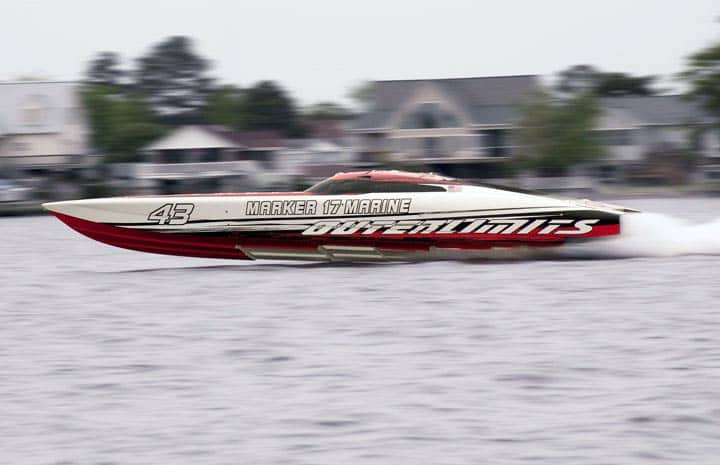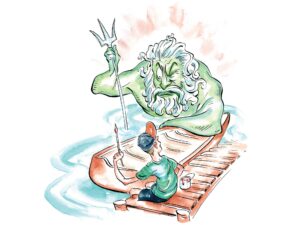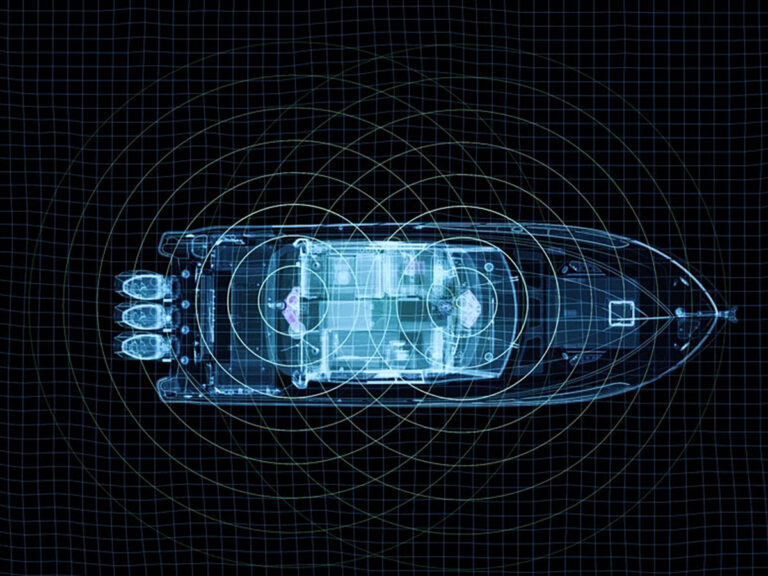
Speed records have been sanctioned and recorded by the American Power Boat Association (APBA) almost since the organization was founded in 1903. The APBA is the United States sanctioning authority for the Union Internationale Motonautique (UIM), the world governing body for powerboat racing, and all qualifying APBA records are also recognized UIM world records.
For a quick explanation on the mechanics of timing a speed run on the water, we went to Fred Hauenstein, APBA director, UIM senior vice president and the man who supervised the timing of the 2014 Unlimited Vee Bottom kilo record of 180.464 set by Brian Forehand in a 43-foot Outerlimits SV 43 in 2014. Rather than measuring absolute peak speed, a kilo run records the average speed of a boat as it travels 1 kilometer. For a record attempt, the boat must run the 1-kilometer course in both directions, starting the second run within 15 minutes of completing the first run. The average speed of those two runs is then averaged to determine the final speed.

Ride along in the Outerlimits SV 43 with its top crew and Editor-in-Chief Kevin Falvey
Accurately measuring boat speed to 0.00 mph has always been a challenge. The timing devices must be located on land — there’s no way to hold timing equipment steady on the water. This also means that the timing devices must be some distance from the subject boat. Wave and boat spray makes it impossible to use “electric eye” timing light-trigger devices. A radio-frequency device triggered by a sensor in the course, as used in auto and motorcycle racing, also won’t work. GPS? Civilian GPS has a margin of error of 0.3 mph.
According to Hauenstein, the system currently used by the APBA has its origins in one devised in the 1960s by engineers and racers Charles Strang and Edgar Rose of Outboard Marine Corporation (Strang eventually was OMC CEO, and Rose head of engineering at the company). Military spotting scopes, or scanners, were mounted on a pivot atop a tripod at the beginning and end of the surveyed kilometer. An official would sight on the boat’s bow as it approached the starting point and pivot the scanner to track the boat. When the sighted scanner passed a point precisely on the imaginary starting line, it would trigger a switch that, back in the day, would activate a bank of mechanical stopwatches. A similar scanner would sight on the boat at the finish and, as it passed, trigger a switch to stop the watches.
“Those watches were even hand-wound, if you can imagine that,” says Hauenstein, “so several watches were averaged to take that variable into account. By the 1970s, basic digital timing replaced the watches, and today we use modern digital equipment, but the start and finish are still triggered through optical scanners that track the boat as it passes.”
There is no distance limit for the run up to the starting point of the measured kilometer, but a good course site will offer the fastest boats several miles of open water to get up to speed and dialed in. The Pamlico River course is popular because the start and finish have already been surveyed (a considerable expense) and there’s plenty of room to get up to achieve maximum velocity.









